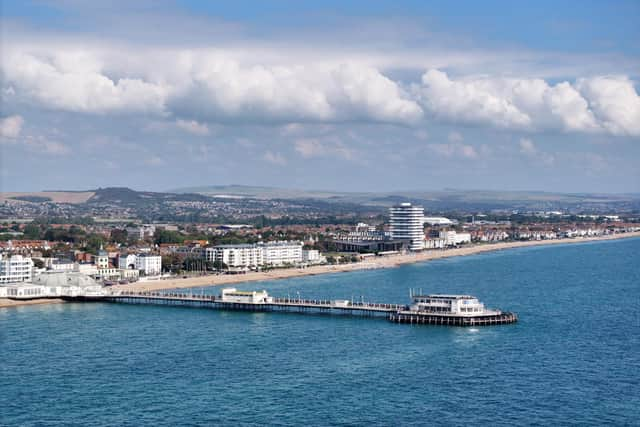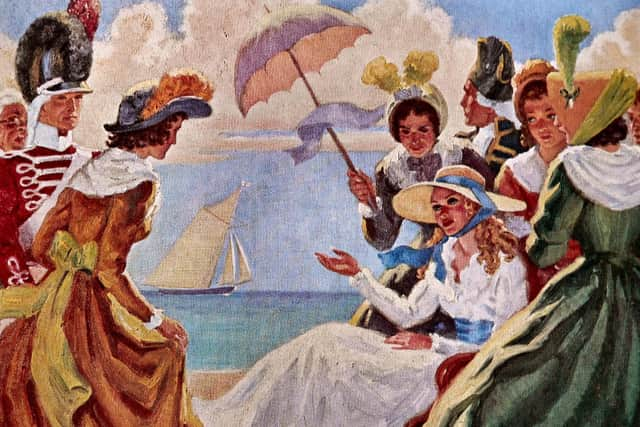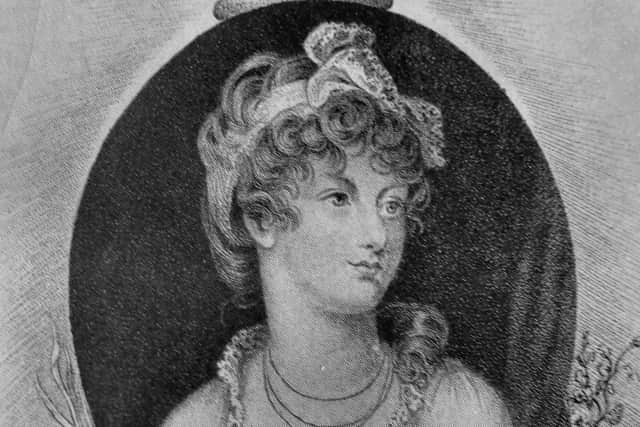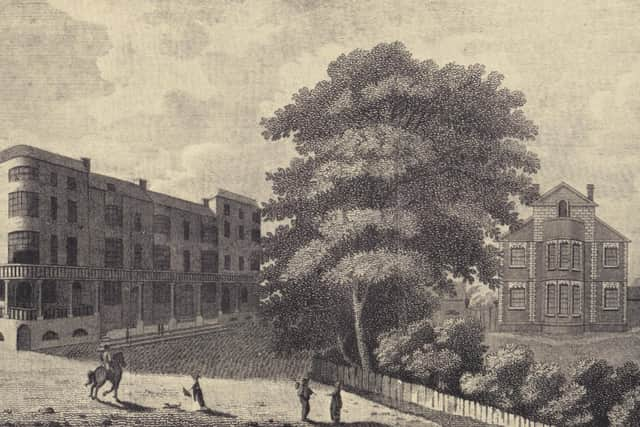The royal affair that changed Worthing forever
and live on Freeview channel 276
He wasn’t in very good health, mentally, and there is little doubt that the state of his mind deteriorated still further when the aforementioned daughter was herself taken ill.
She had been healthy and vigorous until the age of 15, by which time she was the most popular member of a singularly unpopular royal family, the House of Hanover.
Advertisement
Hide AdAdvertisement
Hide AdAs the 16th – and last – child of George III (the king who carelessly lost us the American colonies), Princess Amelia had been carefully protected from the wayward proclivities of her notorious brother, the Prince of Wales.


When it was suggested the princess should follow the fashion of the day and convalesce by the sea at Brighton, it was her mother, the overbearing Queen Charlotte, who insisted that, instead, she went to stay in a tiny, quiet seaside hamlet with more fishing boats than houses, just 10 miles to the west.
Like so many ideas hurriedly conjured up by Queen Charlotte, the choice of Worthing for her daughter’s convalescence was ill conceived.
Not until the Princess actually reached Worthing, after a long and arduous journey, did she realise that, far from being a sophisticated town, it was merely a village by the sea lacking any building suitable for housing a royal visitor and her entourage.
Advertisement
Hide AdAdvertisement
Hide AdPrincess Amelia arrived just before 11 o’clock on the night of July 31, 1798. Her motley entourage consisted of her attendants – Lady Charlotte Bellasyse, Mrs Chaveley (her nurse), Miss Goldsworthy (her governess, who among her other disabilities was very deaf), General Goldsworthy (brother to Miss Goldsworthy and an equerry to the King), an elderly gentleman who suffered from apoplectic fits; and Mr Surgeon Keate.


A discreet veil was drawn over where they were all accommodated on that first night, the only certainty being that it was hardly of the style or quality they had expected!
Next day, the Princess and her party moved into two of the first seven seaside lodging houses built at the sea end of what later became Montague Place.
Only two individual houses in Worthing during that period were capable of accommodating a large group of people, Warwick House (the oldest, where High Street and Brighton Road now join) and Sumner House, on the site later occupied by the Woolworth store.
Advertisement
Hide AdAdvertisement
Hide AdThe latter belonged to Mr Strynger, a governor of the Bank of England, and had a long and pleasant lawn running right down to the foreshore. During her convalescence, Strynger gave Princess Amelia an open invitation to sit here whenever the state of the tide prevented her from being carried down to the beach.


Altogether, her courtiers did not prove to be very congenial company for the young princess, while an infection of the knee (for which bathing in seawater – and consequently her visit to Worthing – had been recommended) prevented her from socialising much with the inevitable throng of 'fashionables' that came flocking into town when word spread of the royal visit in her wake.
The sparse records of the time give no indication of when Princess Amelia first became romantically attached to General Charles FitzRoy, one of her father’s equerries.
'A handsome gentleman of upright and honourable character', FitzRoy was 15 years older than the Princess and at first they simply rode and played cards together. It appeared completely innocent but the association aroused the inevitable gossip and scandal in Court circles.
Advertisement
Hide AdAdvertisement
Hide AdMain reason for this was that the Royal Marriage Bill of 1772 debarred General FitzRoy, being the second son of the first Lord Southampton and descended from Charles II, from marrying the Princess.


Despite this, it was evident their affection was mutual, which put the Princess in an unhappy position. The King was ailing and the Queen was only concerned with keeping news of the attachment from him.
The alternative was for the Princess, now 18, to wait until she was 25. She could then make her own matrimonial choice, providing Parliament did not raise any objection within the year.
Some of their friends advised the couple to ignore the Marriage Bill, convinced the King would never enforce it against his favourite daughter.
Advertisement
Hide AdAdvertisement
Hide AdOfficially, the Princess and her general told the Queen they had decided to wait, convinced that if they flouted the King’s wishes they might finally shatter his mind.
With the Princess becoming more ill, and the King increasingly unstable, the country celebrated the jubilee of George III.
Worthing raised almost £100 by donations, enough to purchase 'a great feast' that was enjoyed in the Steyne by 2,000 people.
Princess Amelia returned to Windsor in December, 1798, but never came back to Worthing. Her illness worsened and she died on November 2, 1810, most people believing she never satisfied her great longing for the one she loved.
Advertisement
Hide AdAdvertisement
Hide AdRumours the couple may have married in secret were probably untrue, but today we know what really happened.
It would probably have astounded residents who welcomed ailing Amelia in July, 1798.
What the local gossips in 1798 had believed was merely 'a budding royal affair' was, in fact, a romance that had been going on in secret for nearly three years.
Might it have changed the perception of Princess Amelia’s visit, as this was the moment in history when Worthing shed its insignificant role as a tiny fishing hamlet and began its expansion to become the largest resort town in West Sussex?
Advertisement
Hide AdAdvertisement
Hide AdHad they known that, prior to visiting Worthing, the Princess travelled in greatest secrecy to Dublin to give birth to her lover’s son, who took the name Hugh Huntly, would it really have made any difference? Probably not.
• Freddie Feest, who died in 2016 at the age of 87, created the popular history series Bygones for the Worthing Herald. His family has kindly given permission for his fantastic articles to be reproduced in his memory.